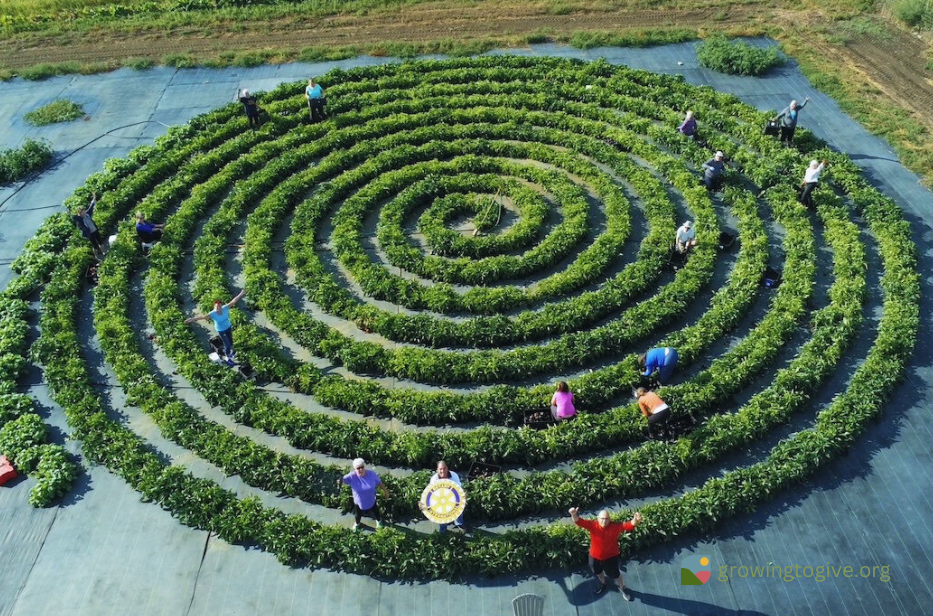Amazing Spaces: How Spiral Farming Could Revolutionize Urban Growing
Imagine a world where resilient, thriving communities are the norm, and where hunger is a thing of the past. Water scarcity and food insecurity in climate-vulnerable and low-income regions have been replaced by plenty of fresh produce grown in soil restoring farms, food forests, and gardens.
Growing to Give, a US non-profit, claims that this dream could become the key to community food resilience even in the smallest urban spaces. Growing to Give highlights two unique food growing systems, Crop Circle Farm and Gardens and a vine growing system called the Tomato Volcano, both of which are dedicated to transforming the landscape of agriculture and community well-being. Growing to Give’s mission is to combat water scarcity and food insecurity by promoting sustainable agriculture — optimizing efficient and productive growing areas in climate-vulnerable and low-income regions.
From small container gardens and backyard growing spaces to urban farms and rural acreages, Crop Circle Farms and Gardens are both pretty and productive. The organization states that these spiral food formations use 90 percent less water, 85 percent less fertilizer and a quarter of the land space used by conventional agriculture, and that they work synergistically with the natural environment above and below the soil thereby supporting biodiversity.
The Tomato Volcano is the organization’s showcase. The design keeps plants elevated from the soil and facilitates air circulation, preventing excess moisture that can lead to molds and mildews, and allowing for vines to grow as they would in nature over undulating ground.
During drought and wildfire season, plants still flourish. The organization says that users report that the systems are easy to harvest and require zero weeding, and that a small-scale farmer using a Tomato Volcano system in South Africa could expect a tenfold increase in tomato yields compared to traditional methods. Growing to Give claims that a Tomato Volcano system uses 50 percent less water than other methods and is based on an heirloom model that grows new plants from a non-GMO cultivar. Moreover, it is designed to last for generations. Marine-grade stainless steel construction can last 260 years, minimizing the ecological impact associated with manufacturing and the waste associated with short-lived products destined for the landfill.
Significantly boosting crop yields while conserving water and space in chemical-free growing environments means that Growing to Give can tackle food insecurity in many vulnerable parts of the world in a climate positive approach. It believes that a sustainable and equitable food system must come from innovations made to withstand the test of time.
Growing to Give says that it’s about empowering communities with the tools they need to thrive. The initiative, Strengthening Community Gardens Across America, Africa and the Caribbean, demonstrates Growing to Give’s commitment to educating farmers and communities in sustainable agriculture practices and sustainable living through webinars and online courses and resources.

Those using the Growing to Give’s agricultural systems have expressed a deeper understanding of the environmental impact of their food choices and gardening practices. The organization’s long-term vision is to ensure that the impact lasts well beyond the next decade.
Those thriving communities may be just up ahead on the road toward a more sustainable food system. Growing to Give says that its initiatives are already enabling women who have traditionally been underrepresented in the economics of agriculture, to take a more active role, giving them economic independence. Promoting cooperation and engagement at all stages of its programs, it reports that farmers and smallholders are already creating more cohesive communities, growing more food, sharing knowledge, and building a sense of shared purpose and belonging as they tackle food security and climate-positive growing together.
Learn more about Growing to Give.
